By Louise Irvine
Experience the crazy world of Alice in Wonderland and the Mad Hatter on Saturday, December 4 as part of our Through the Looking Glass season to celebrate the 150th anniversary of the book’s publication. Michael Doulton, the fifth generation descendent of the Royal Doulton founder, will be visiting WMODA and talking about his role as a traveling ambassador for the company for over 40 years. On one of his trips to South Africa, he entered the spirit of a curious Royal Doulton tea party and officiated as the Mad Hatter!
Alice in Wonderland
Alice Liddell was the catalyst for Alice’s Adventures in Wonderland by Lewis Carroll, the pen name of the Reverend Charles Lutwidge Dodgson. An Oxford mathematics professor and friend of the Liddell family, Dodgson used to entertain the young daughters with fantastical stories during picnics on rowing trips. Alice was 10 years old when she asked Dodgson to write down her adventures underground. He gave her a handwritten illustrated manuscript which was developed into his first book which was published in 1865.
Six years later, he published Through the Looking Glass and What Alice Found There and the sequel is almost a mirror image of the original book in terms of setting and imagery. Alice tumbles down the rabbit hole into Wonderland in the May sunshine whereas she climbs through the looking glass on a snowy, wintry night. The imagery of playing cards is replaced with chess in the second book and the size distortions in the first book are exchanged for opposites, mirror reflections, and time running backwards in the second.
A Royal Doulton figure by Peggy Davies features Alice reading the second book about her adventures. The pages are open at the poem about the Walrus and the Carpenter who weep for the fate of the juicy oysters as they gobble them up. With the aid of a magnifying glass, you can read some of the lines in the poem and see an illustration of the crying Walrus inspired by John Tenniel’s original illustrations for the scene. Anthropomorphic animals dressed as people and expressing human emotions are an important feature of Alice’s Wonderland.
Dead as a Dodo
Dodgson reputedly presented the extinct Dodo bird as a caricature of himself in Wonderland because of his stammer when pronouncing his name. The non-flying bird, which was driven to extinction on the island of Mauritius in the 17th century, has inspired several ceramic artists at WMODA. William de Morgan, the celebrated Arts & Crafts potter, designed tiles featuring the Dodo along with other creatures from Wonderland which Dodgson used to decorate the fireplace of his rooms at Christchurch College. David Burnham Smith was also inspired by the Dodo as well as characters that resemble Alice and the Queen of Hearts in playing card style.
The Ardmore studio in South Africa recently made a Dodo teapot which would hold its own at any Mad Hatter’s tea party and last year they created a spectacular Dodo tureen. Many of the whimsical Ardmore designs would be quite at home in Alice’s wonderland. Lewis Carroll’s classic book has been translated into nine African languages including Afrikaans and Zulu and there are surprising parallels to the oral traditions in African folklore.
Jabberwocky Nonsense
When Alice passes through the looking glass, she discovers a book of Jabberwocky poetry which she can read only by holding it up to a mirror. On her travels across the countryside, which is laid out like a giant chessboard, she meets the Red Queen who offers Alice a throne in a real-life chess match. George Tinworth, Royal Doulton’s first artist, was influenced by Alice’s alternative world when he imagined a chess set populated with mice in the 1880s. His whimsical bibelots of mice and frogs engaged in human pursuits must have inspired some lively dinner table conversations in the style of Lewis Carroll.
Fellow Doulton artist, Mark Marshall, was also intrigued by the bizarre beings in Alice’s Wonderland and sculpted them as stoneware paperweights. His Cheshire Cat grins ear to ear, Bill the Lizard is suitably slithery, and you wouldn’t want to find his Mock Turtle in the soup of that name. His Rath vessel from the Jabberwocky nonsense poem is even curiouser as it is half boar and half foliage. The Jabberwock’s “jaws that bite and claws that catch” influenced many of Marshall’s reptilian vases and sculptures.
Curiouser & Curiouser
Alice is baffled at losing her identity and is at a loss for words in the Wood Where Things Have No Names and there are no distinctions between human and animal, self and other. This vision is reminiscent of the Ghostly Wood design by Daisy Makeig-Jones for Wedgwood’s Fairyland Lustre collection. In among ghoulish trees and monstrous animals, the white rabbit is following Alice down the rabbit hole. In Wonderland, Alice discovers a “Drink Me” magic potion which makes her shrink to ten inches tall while a cake marked “Eat Me” causes her to grow to a huge height. Many WMODA visitors experience the Alice effect when watching Alex Meiklejohn make his miniature ceramics on the potter’s wheel.
Alice meets lots of nursery rhyme characters on her journey through the looking glass including the Lion and the Unicorn who fight each other violently for the crown, and Humpty Dumpty who explains the meaning of Jabberwocky before he falls off the wall. She also encounters strange creatures that are half bug, half object including the Bread-and Butterfly and the Rocking Horsefly.
Cinema to Ceramics
Alice’s surreal adventures have inspired more than 40 moviemakers since the 1903 silent short film just five years after Dodgson’s death. The black and white Paramount film of Alice in Wonderland in 1933 featured an all-star cast including Cary Grant as the Mock Turtle and W C Fields as Humpty Dumpty. Alice Liddell, by then aged 80 was invited to the preview and gave a favorable review. “I am delighted with the film and am now convinced that only through the medium of the talking picture could this delicious fantasy be tastefully interpreted”.
Disney has given us some of the most memorable images of Alice in Wonderland from the 1951 animated movie to Tim Burton’s more recent carnivalesque fantasies starring Johnny Depp with their spectacular special effects. In 2000, Royal Doulton secured licenses to reproduce the cartoon characters in the Disney Showcase collection continuing a tradition that dates to the early 1900s when they made a nursery tea service decorated with characters from Wonderland.
A British TV drama about Alice and her creator was screened in 1965, which coincided with the launch of Royal Doulton character jugs of the Mad Hatter, the Walrus & Carpenter, and the Ugly Duchess which was based on a 16th-century painting by the Flemish artist Quentin Massys. Alice collectors will also be familiar with the Beswick figure set inspired by the original Tenniel illustrations which ran for ten years from 1973-1983.
Don’t Be Late!
Follow us down the rabbit hole to a WMODA Wonderland on Saturday, December 4. Meet Michael Doulton who will be opening our new Mad Hatter’s exhibition of crazy teapots and Alice memorabilia by Royal Doulton and other British potteries. Don’t be late for this very important date!
Thank you to Elyse Buchanan for lending books and ephemera from her extensive Alice in Wonderland collection.
Read more...
Jabberwock & Other Creatures by Mark V. Marshall
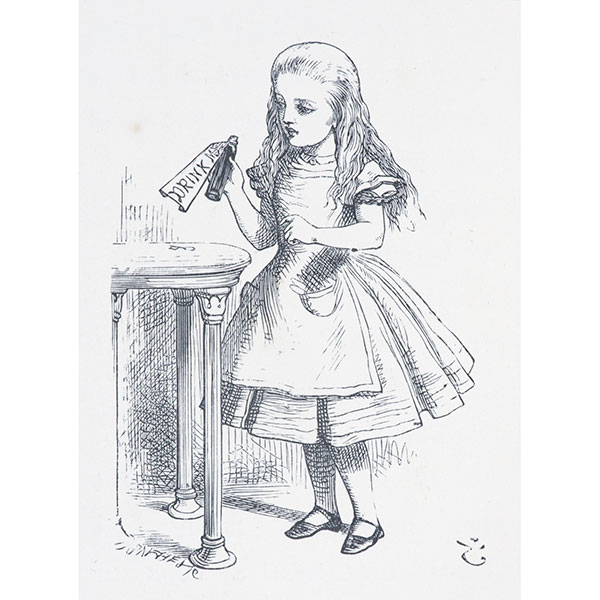
Alice in Wonderland, Drink Me by J. Tenniel
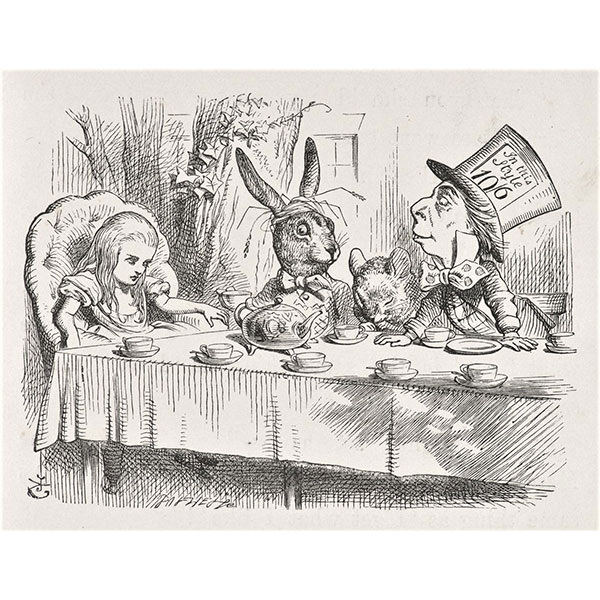
Mad Hatter's Tea Party by J. Tenniel
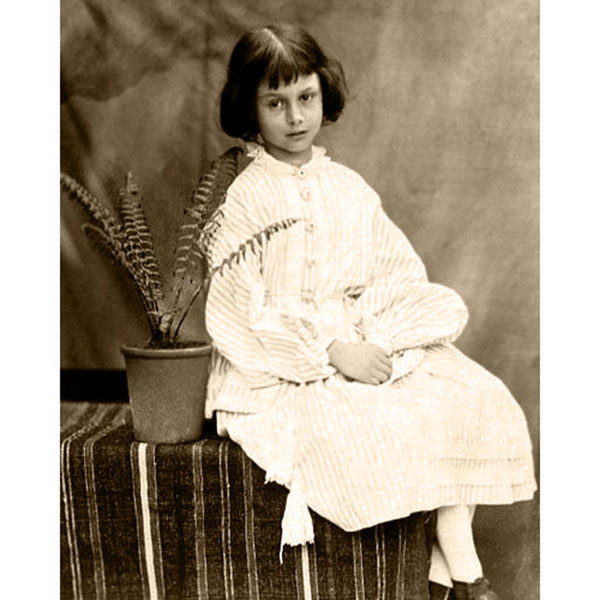
Alice Liddell by Lewis Carroll
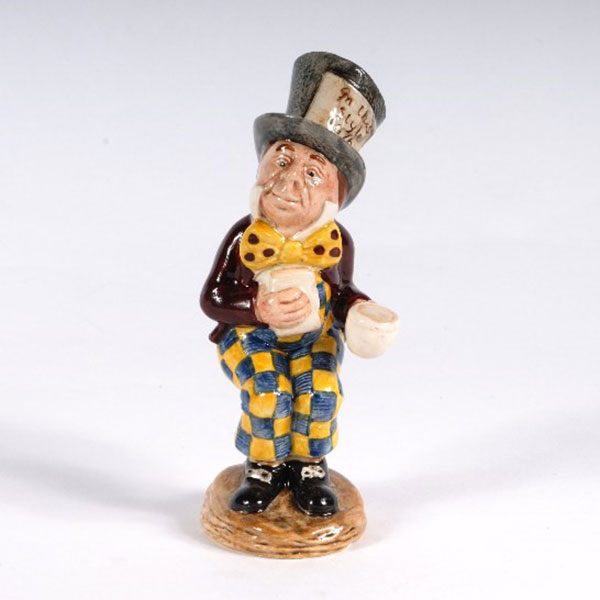
Beswick Mad Hatter
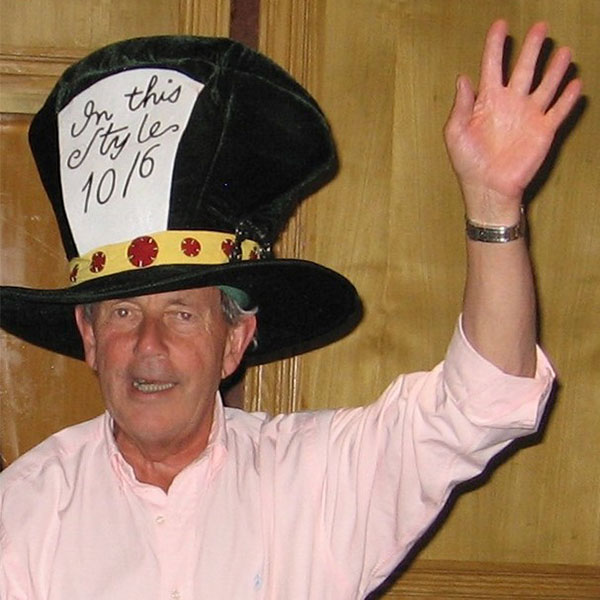
Michael Doulton as the Mad Hatter
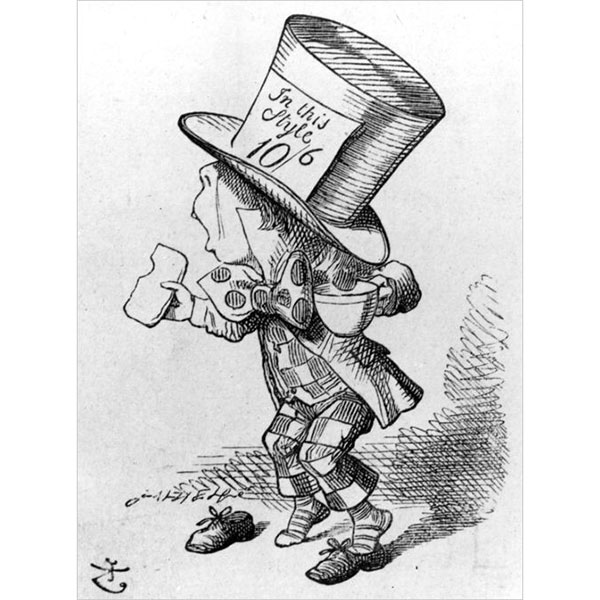
Mad Hatter by J. Tenniel
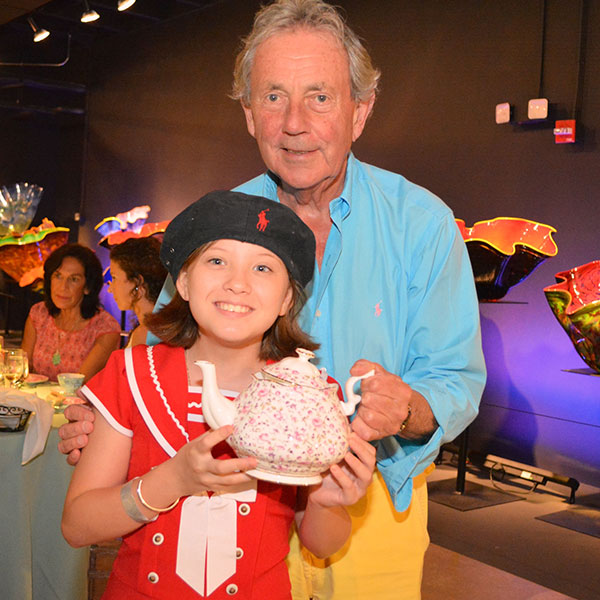
Michael Doulton at WMODA event
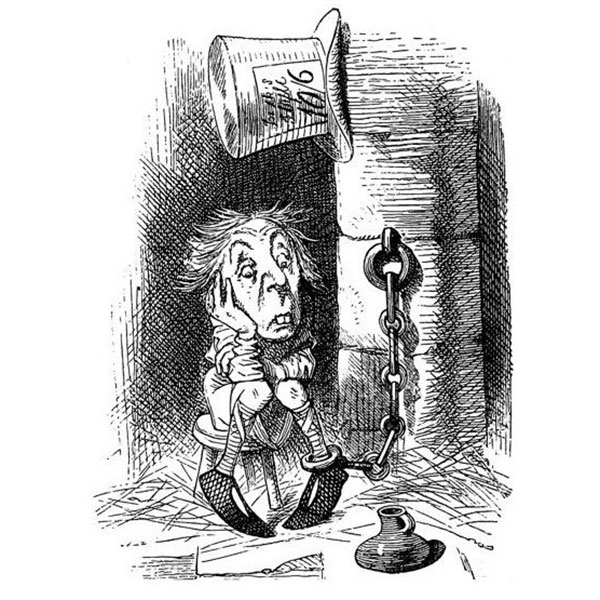
Mad Hatter in Prison by J. Tenniel
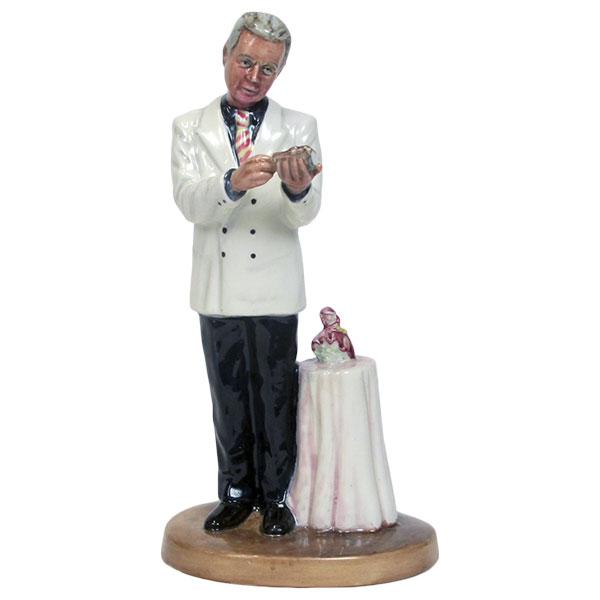
Michael Doulton
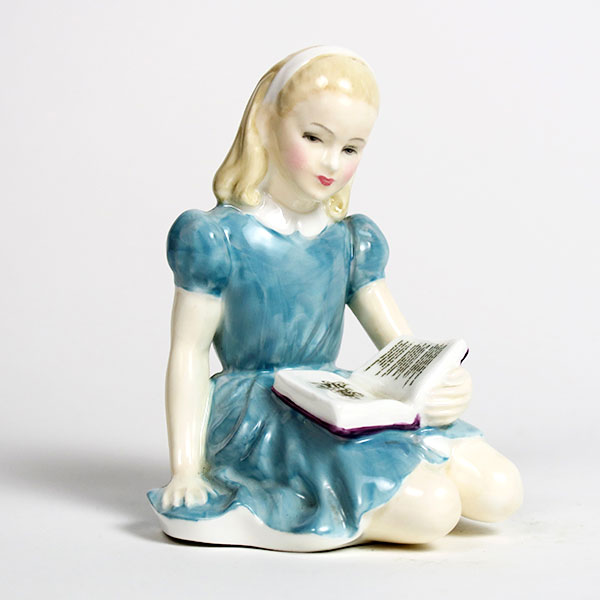
Royal Doulton Alice by P. Davies
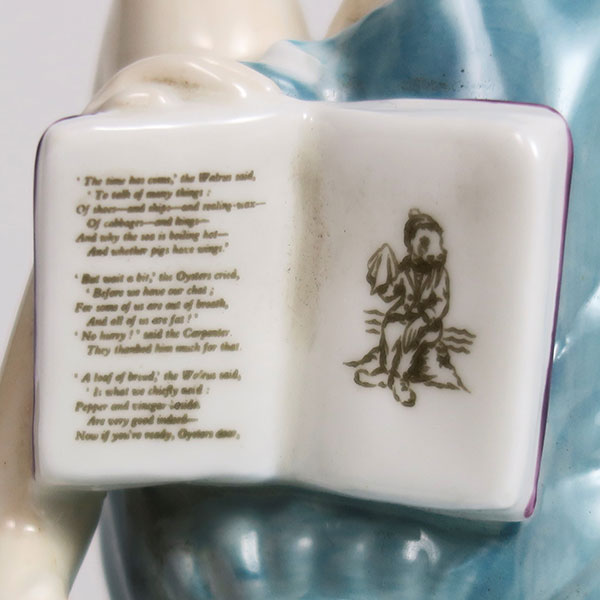
Alice book detail
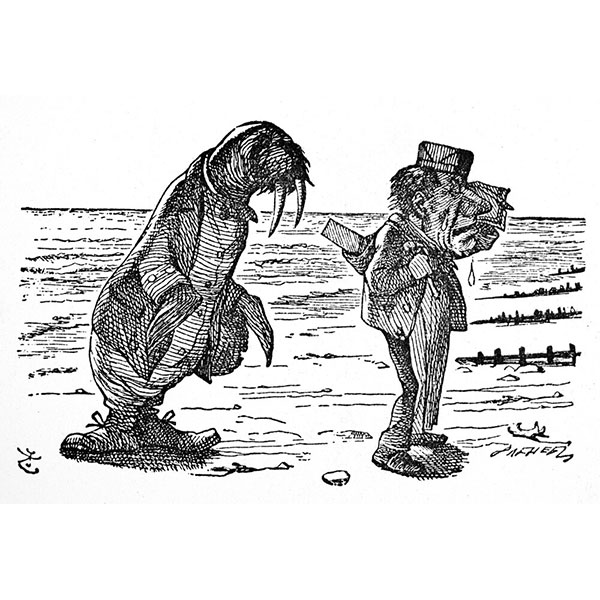
Walrus and Carpenter by J. Tenniel
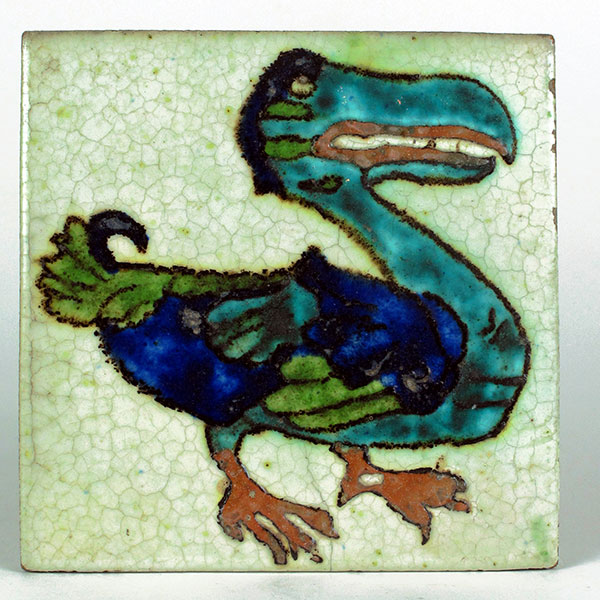
William de Morgan Dodo Tile
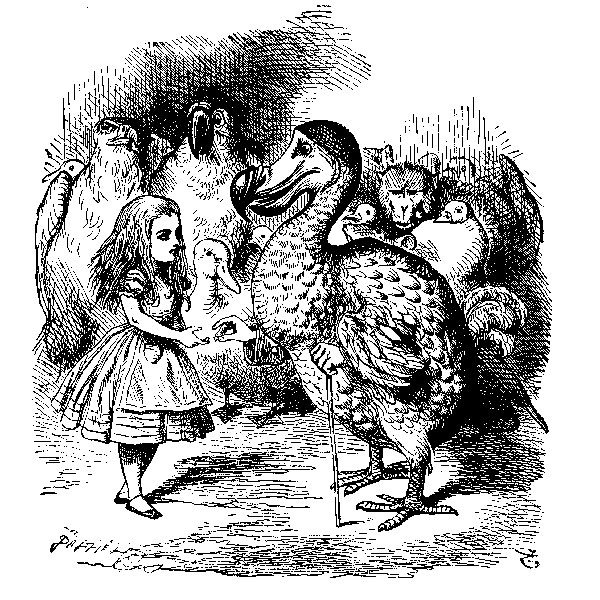
Alice & Dodo by J. Tenniel
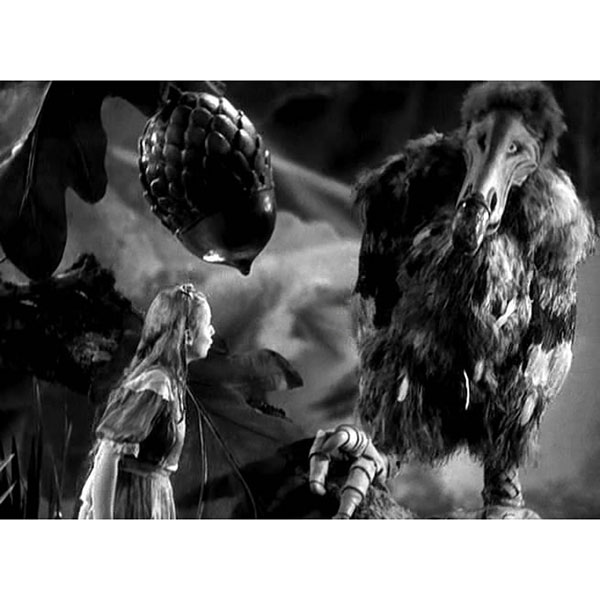
Alice & Dodo in the 1933 movie
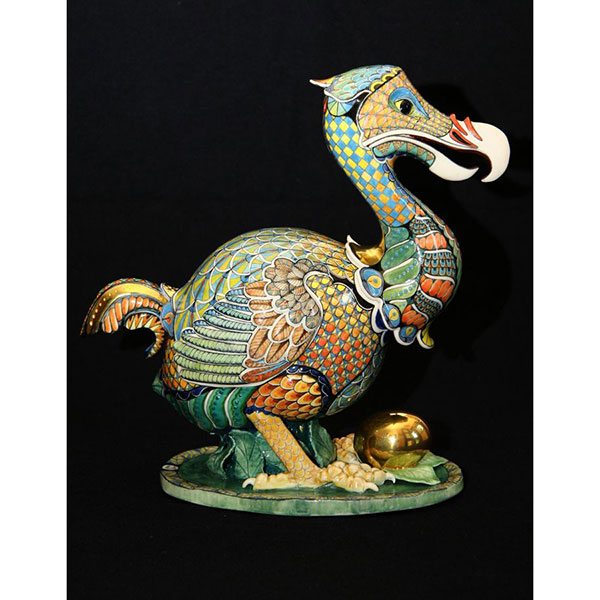
David Burnham Smith Dodo
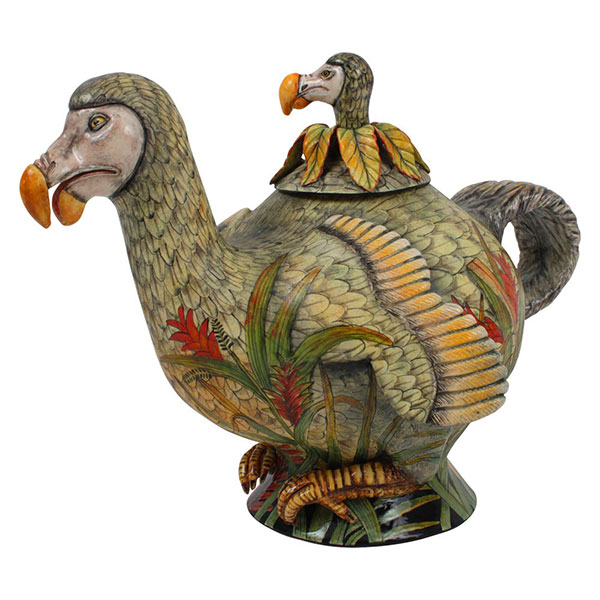
Ardmore Dodo Teapot
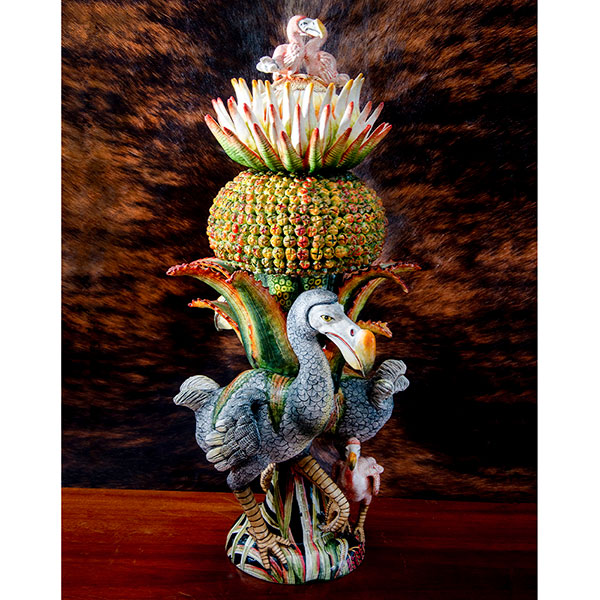
Ardmore Dodo Tureen
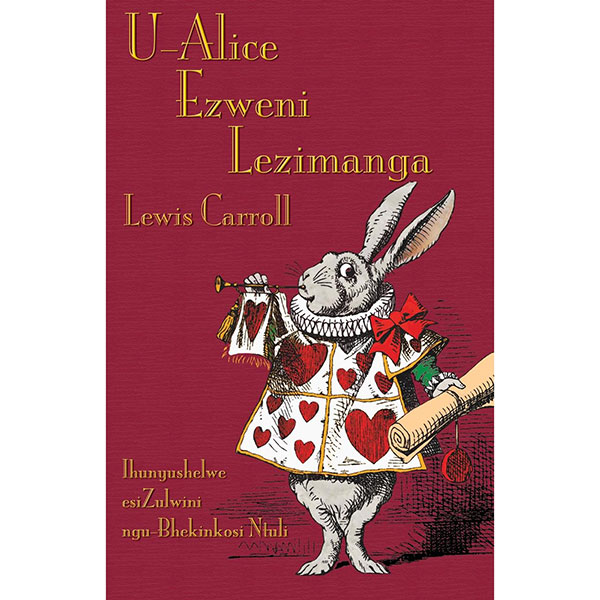
Alice in Zulu
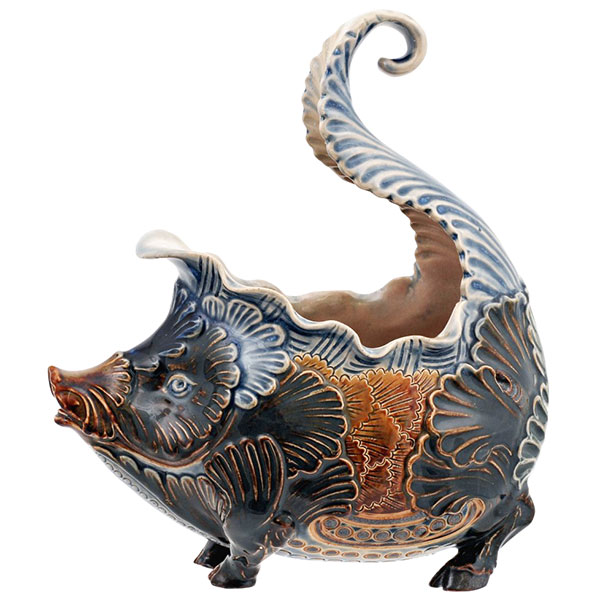
Doulton Rath by M. V. Marshall
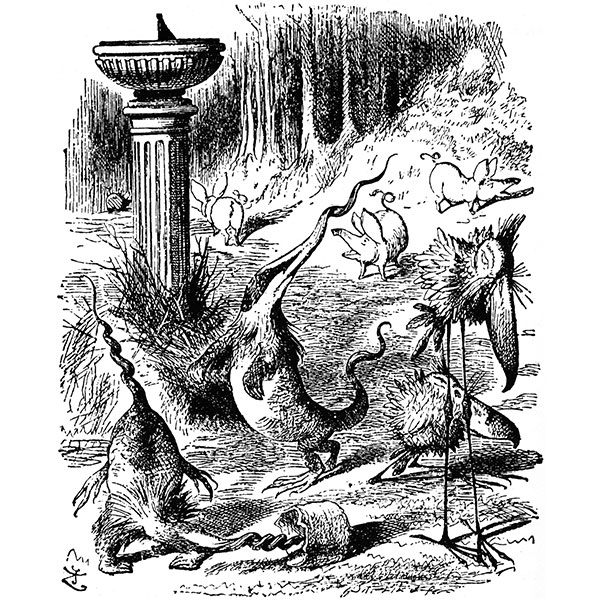
Raths, Borogroves & Toves by J. Tenniel
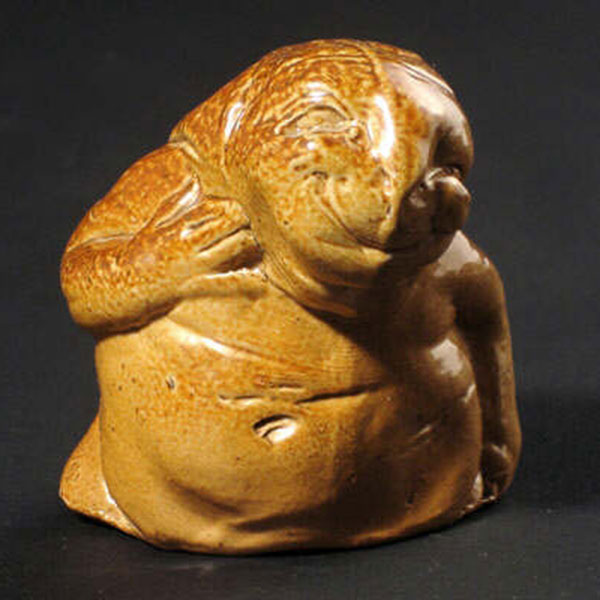
Doulton Mock Turtle by M. V. Marshall
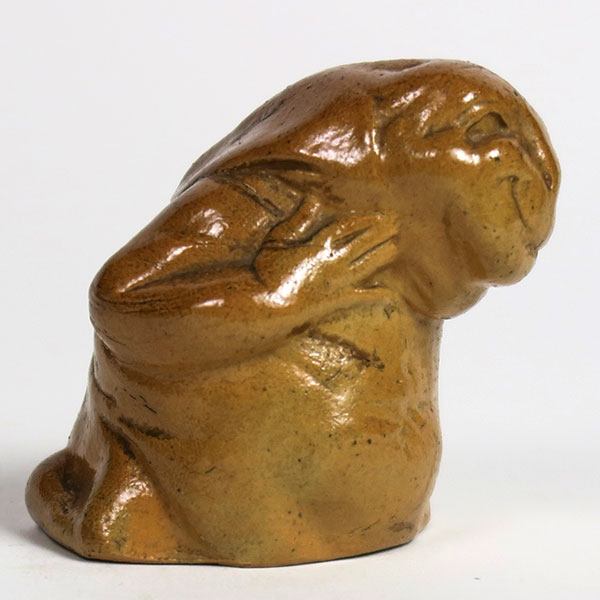
Doulton Mock Turtle by M. V. Marshall
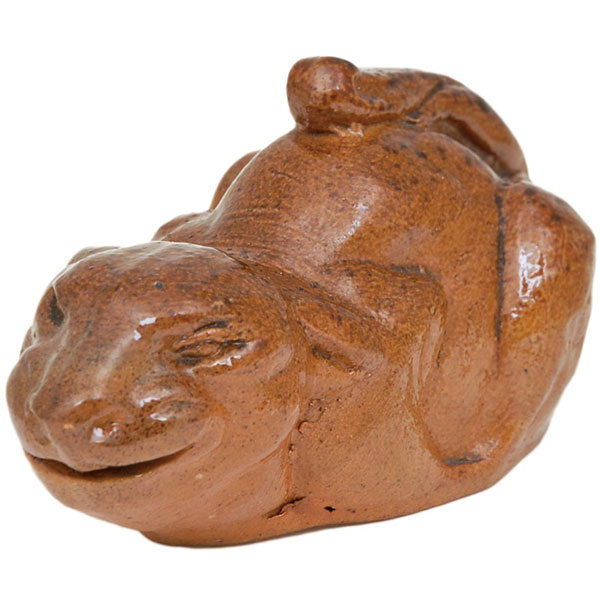
Doulton Cheshire Cat Paperweight by M. V. Marshall
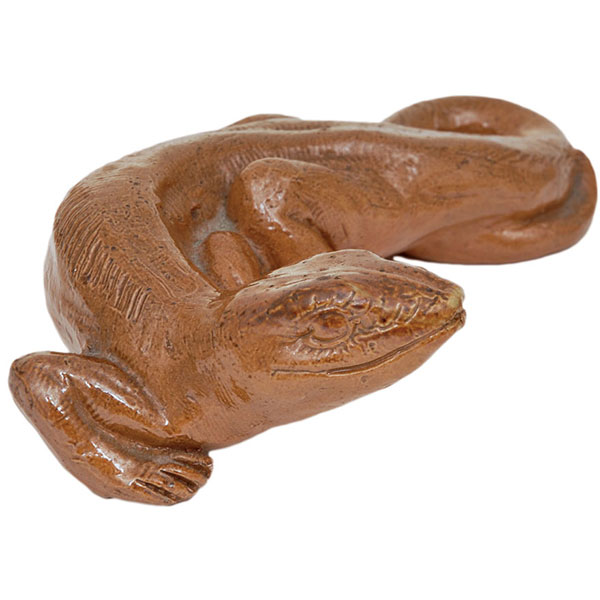
Doulton Bill Lizard Paperweight by M. V. Marshall
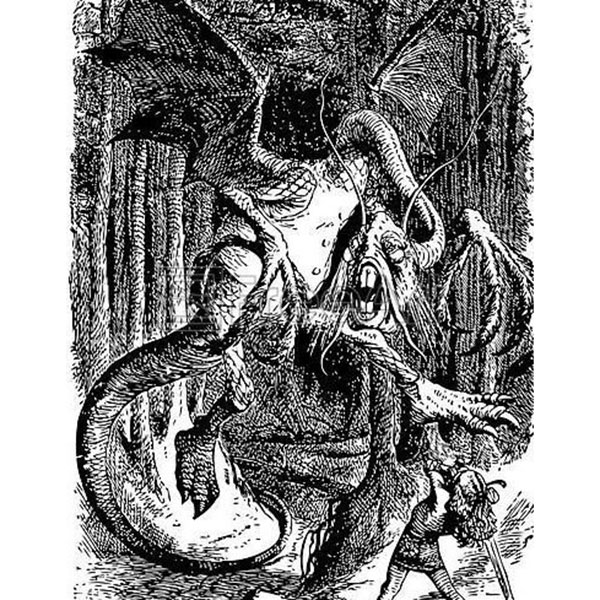
Jaberwock by J. Tenniel
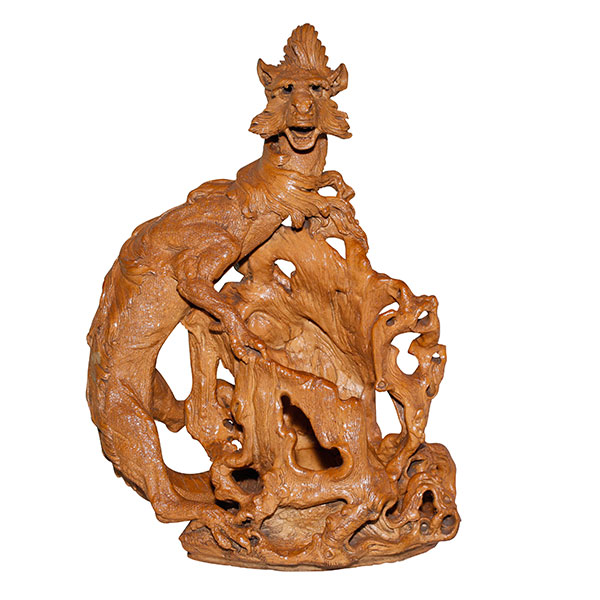
Doulton Jaberwocky by M. V. Marshall
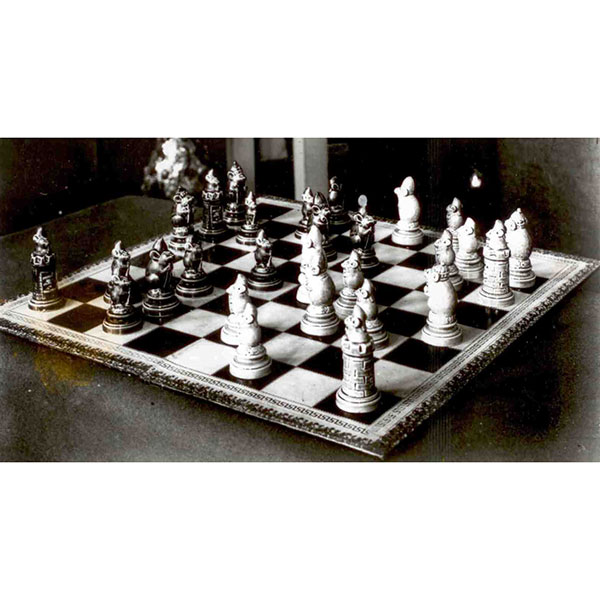
Doulton Chess Set by G. Tinworth
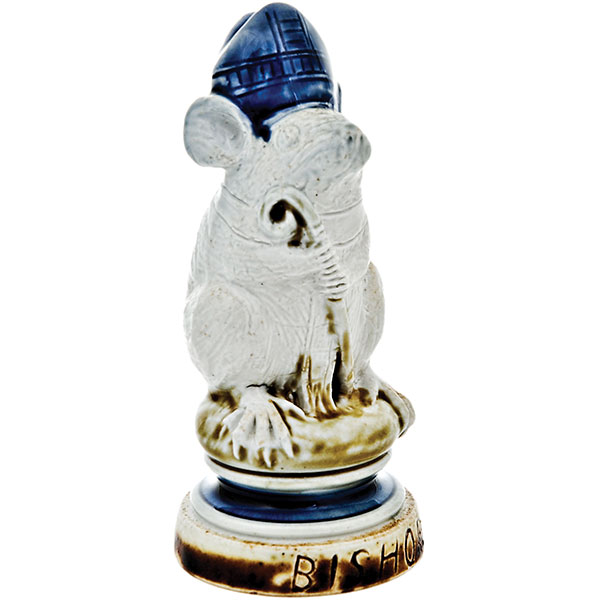
George Tinworth Chess Piece
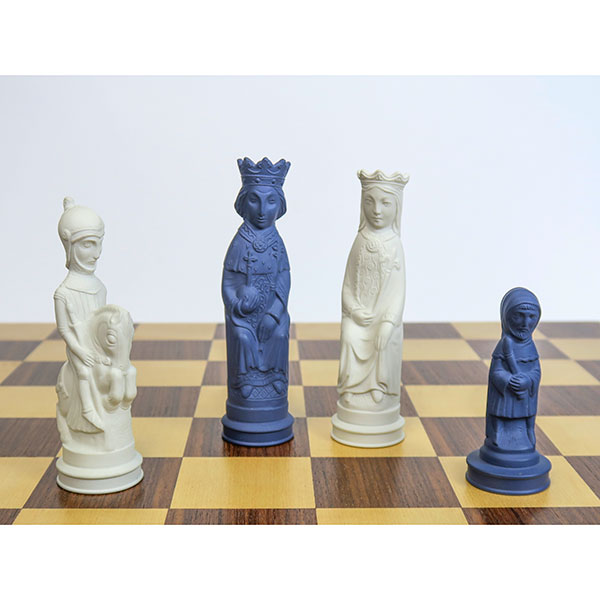
Wedgwood Chess Pieces by A. Machin
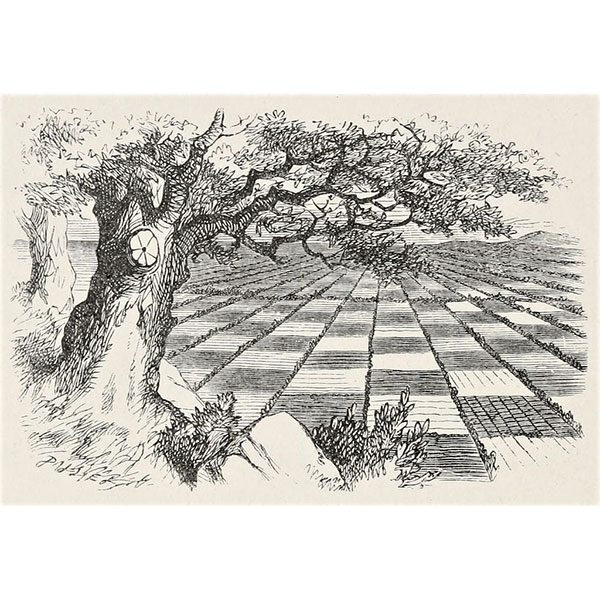
Through the Looking Glass Chessboard Landscape by J. Tenniel
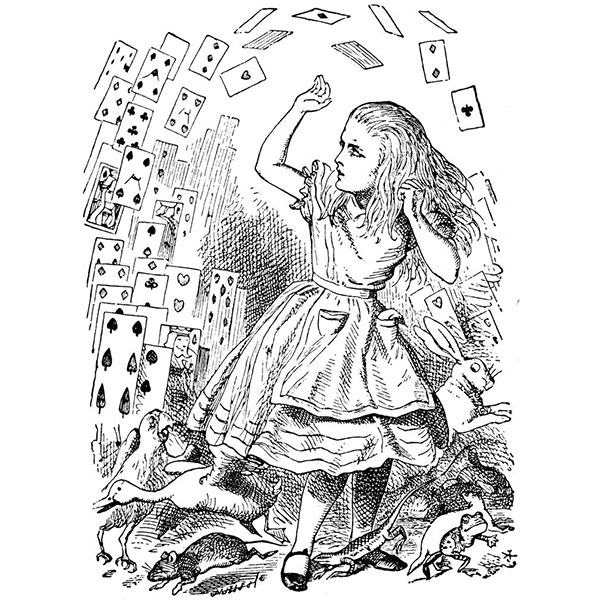
You're nothing but a pack of cards by J. Tenniel
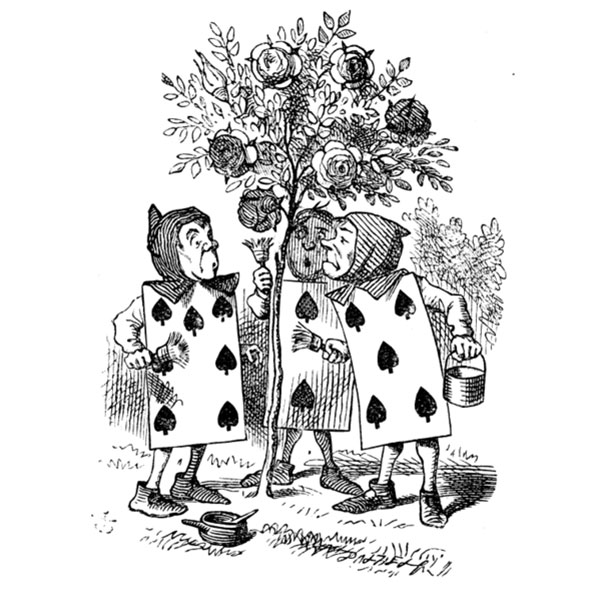
Playing Card Gardeners by J. Tenniel
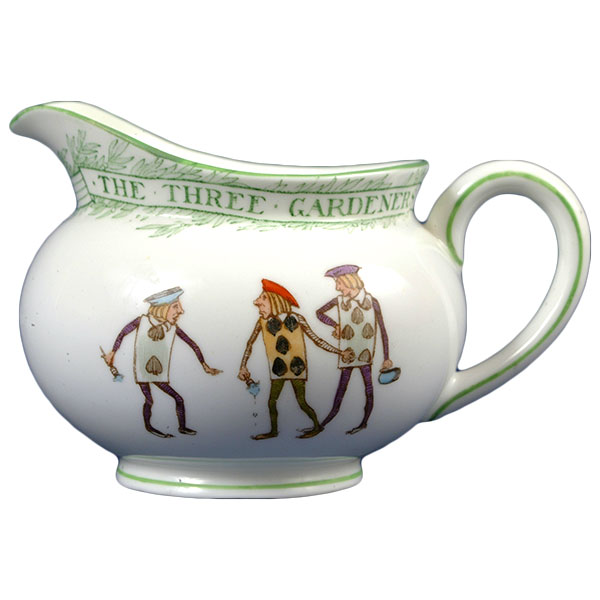
Royal Doulton Three Gardeners from Alice in Wonderland
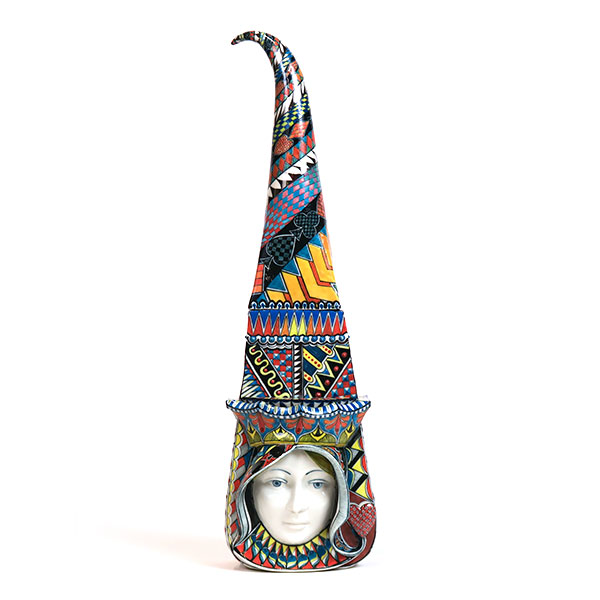
David Burnham Smith Queen of Hearts
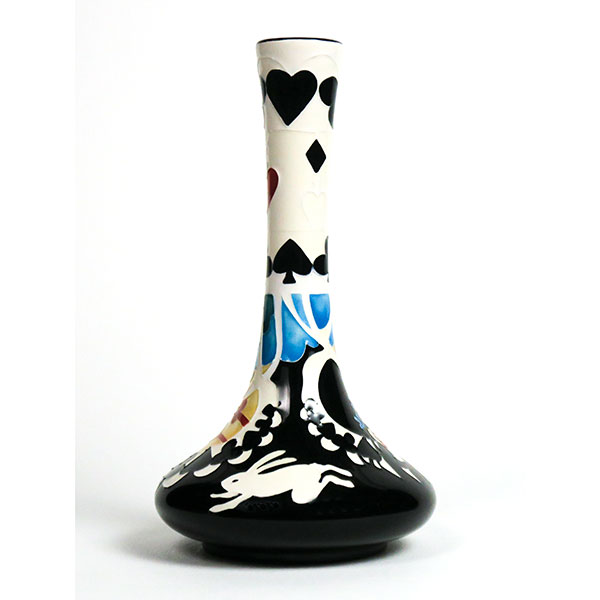
Moorcroft Trial Wonderland Vase
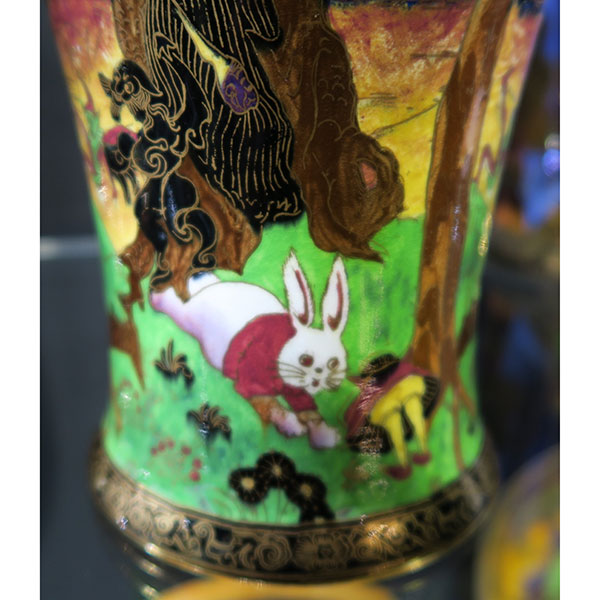
Ghostly Wood White Rabbit detail
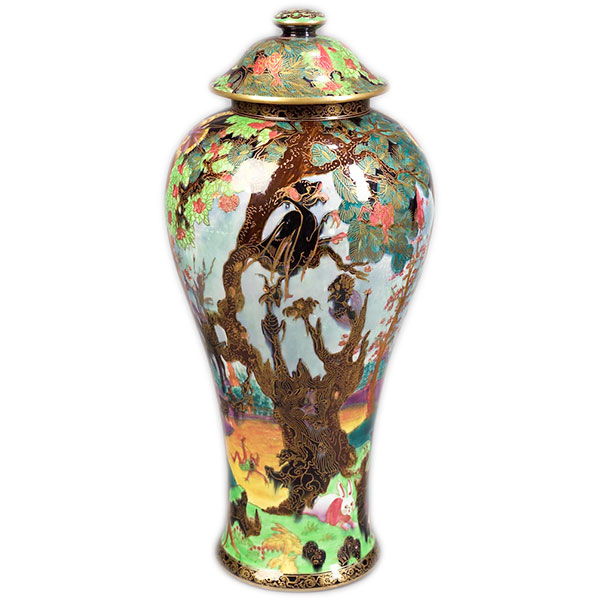
Wedgwood Ghostly Wood White Rabbit
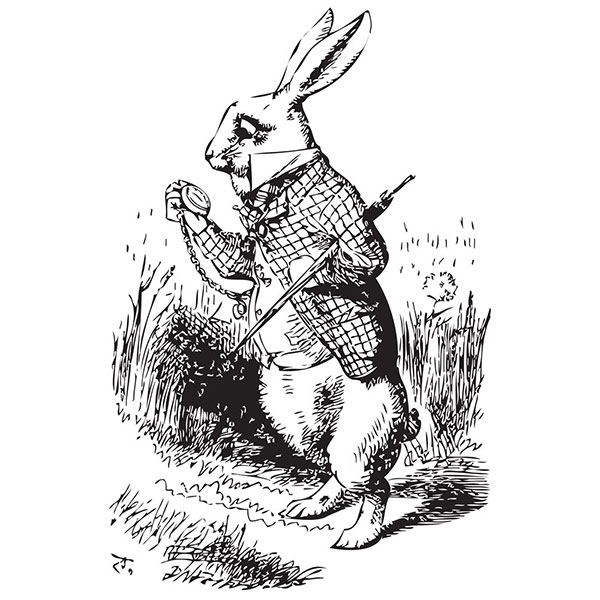
White Rabbit by J. Tenniel
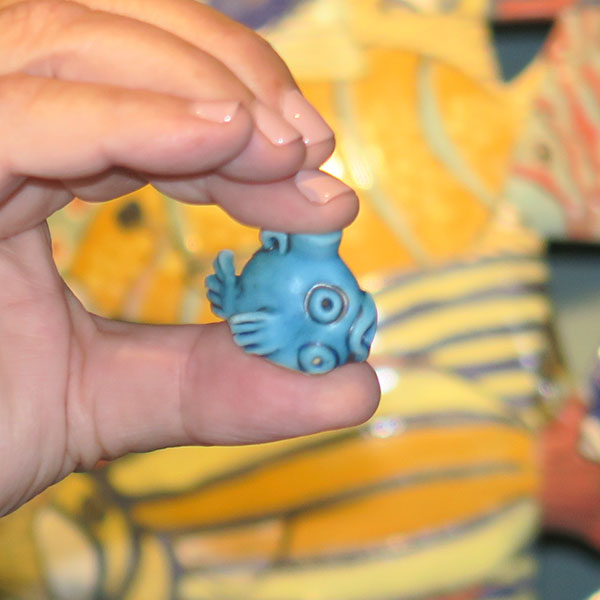
Miniature Fish by A. Meiklejohn
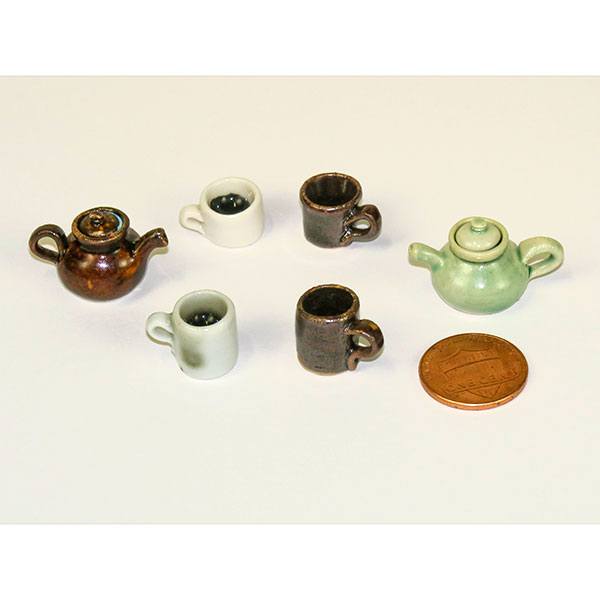
Miniature Tea Set and penny by A. Meiklejohn
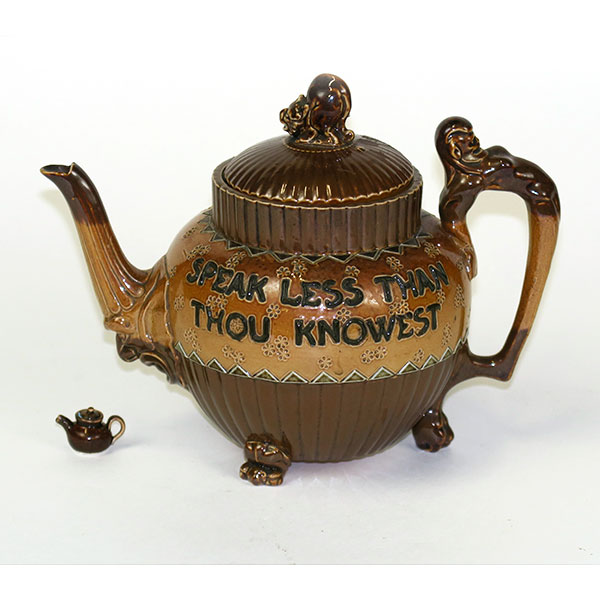
Doulton Victorian Motto teapot with mini teapot by A.Meiklejohn
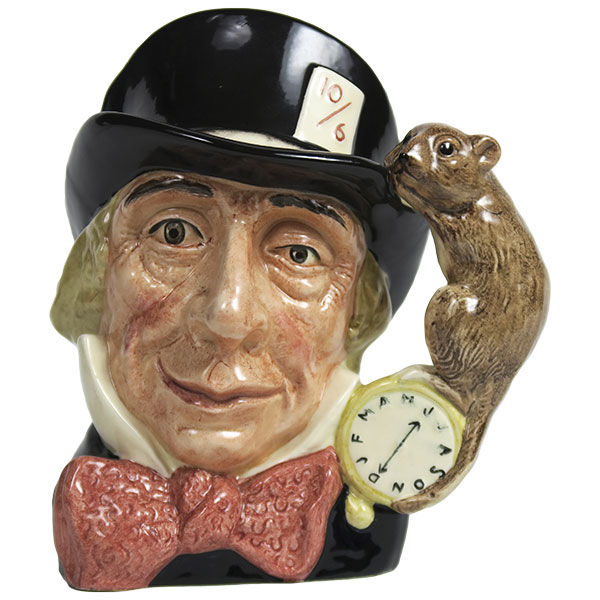
Royal Doulton Mad Hatter Character Jug
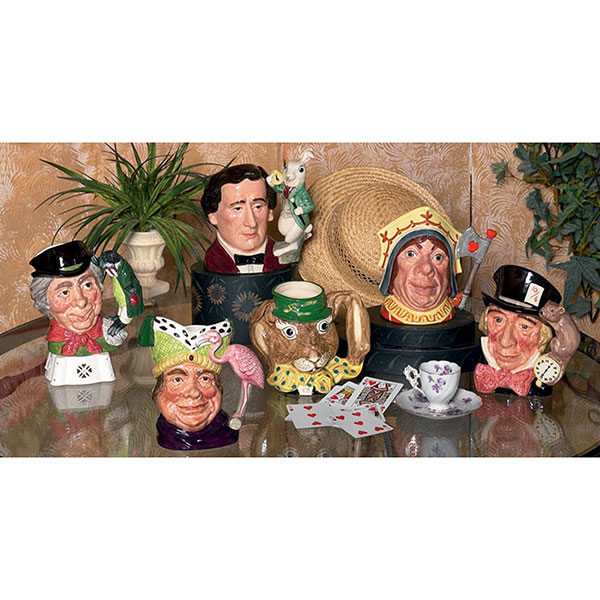
Royal Doulton Alice in Wonderland Character Jugs
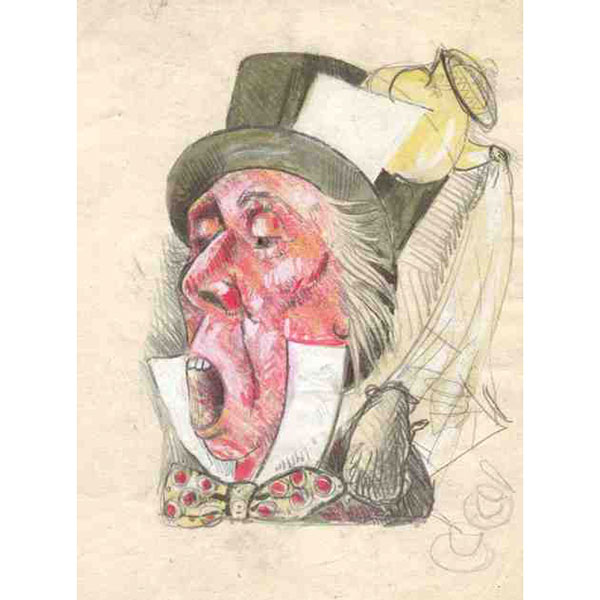
Mad Hatter Sketch by D. Biggs
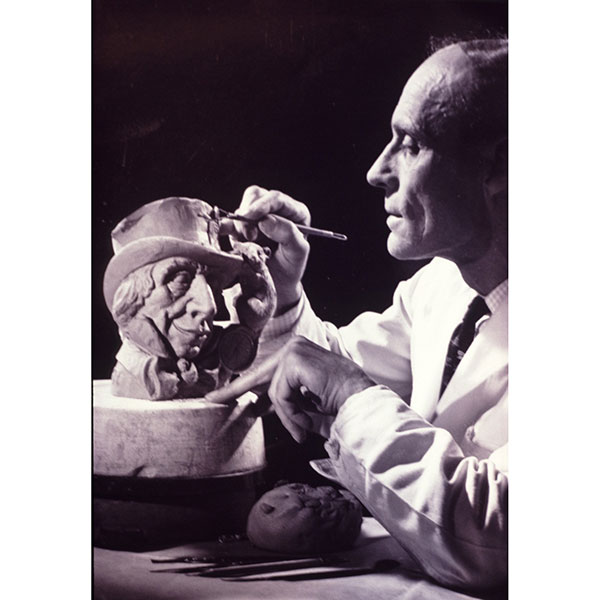
Max Henk working on a character jug
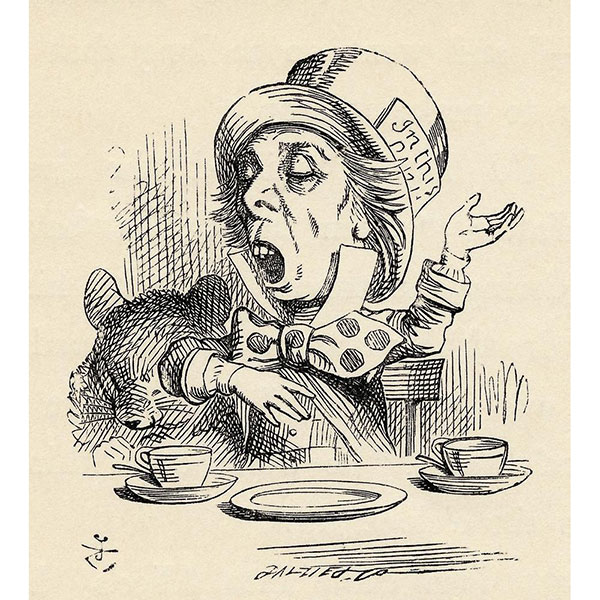
Mad Hatter reciting nonsense by J. Tenniel
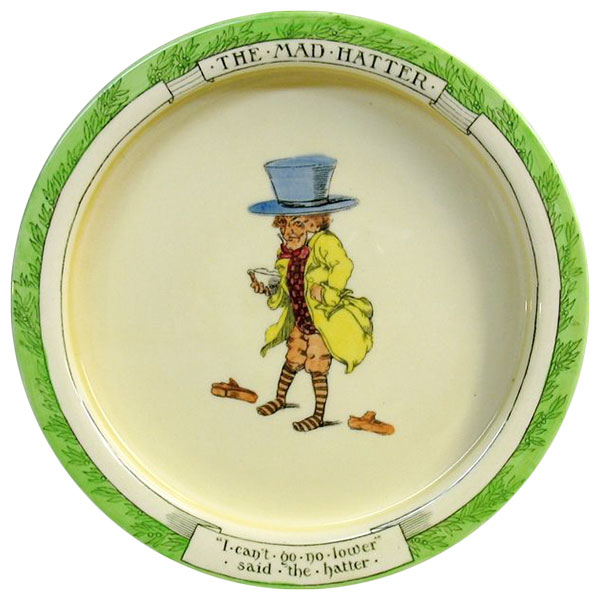
Royal Doulton Mad Hatter bowl
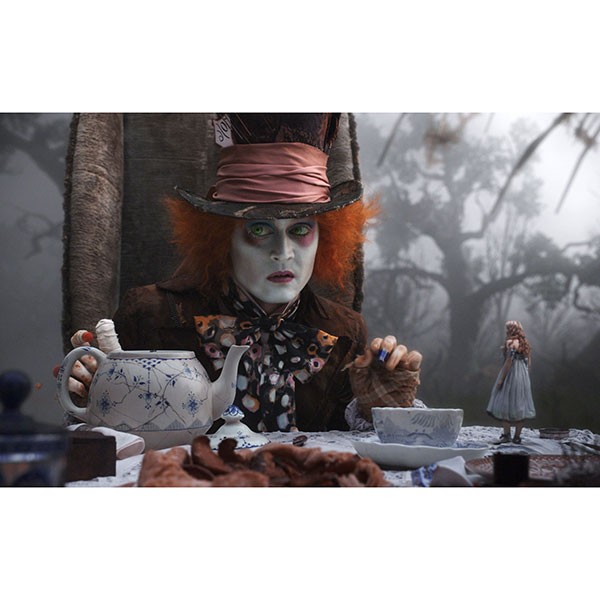
Johnny Depp as the Mad Hatter
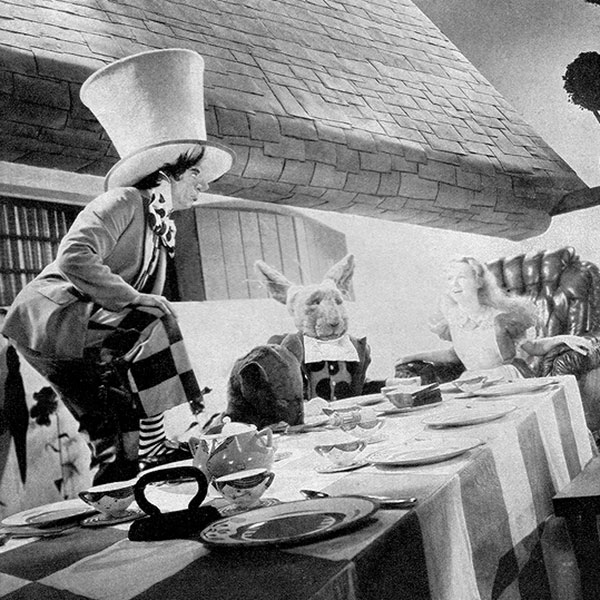
Mad Hatter in the 1933 movie
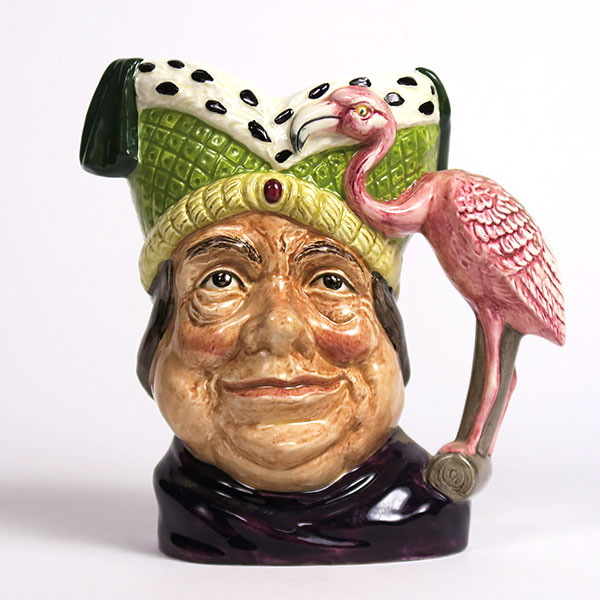
Royal Doulton Ugly Duchess Character Jug
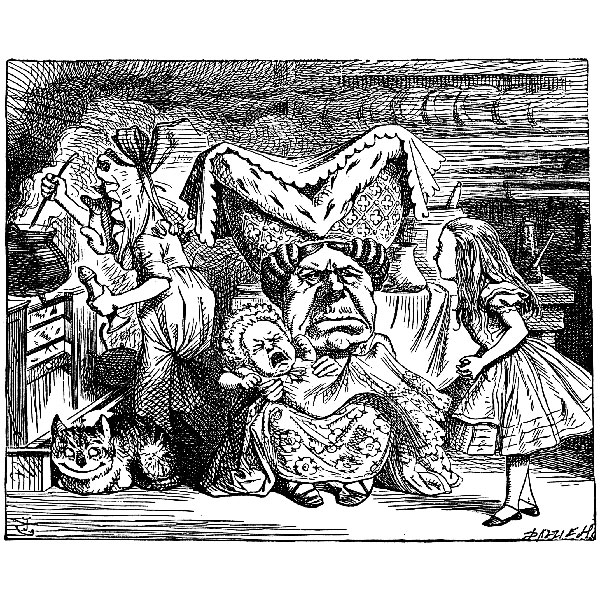
Ugly Duchess & Cook by J. Tenniel
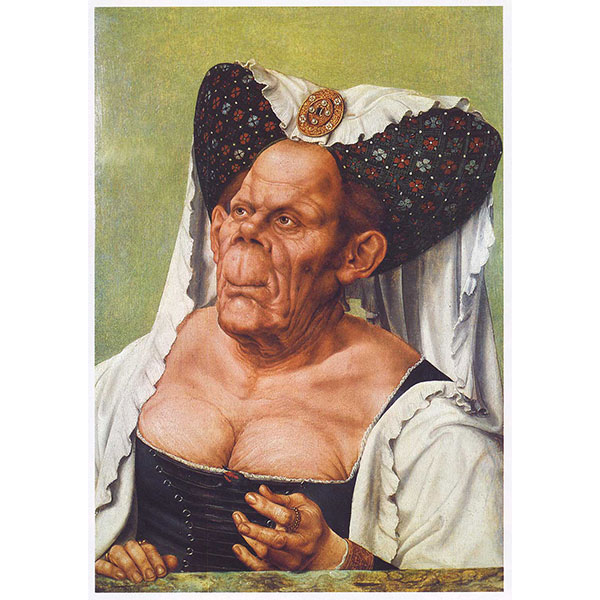
Ugly Duchess by Q. Massys

Royal Doulton Alice in Wonderland Character Jugs
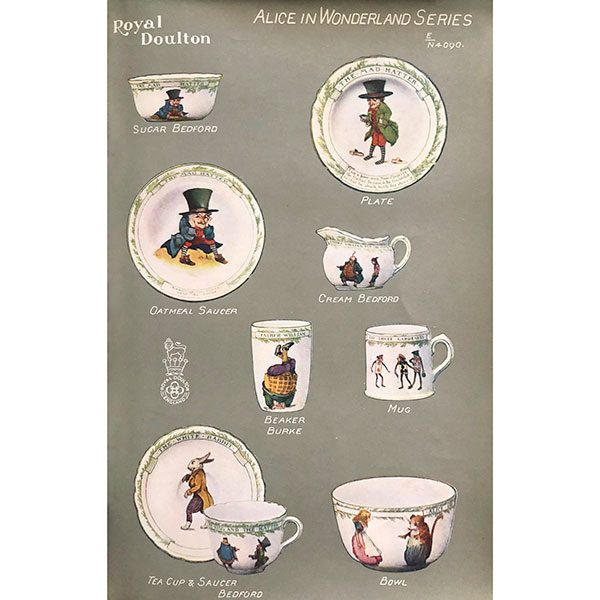
Royal Doulton Alice series catalog page
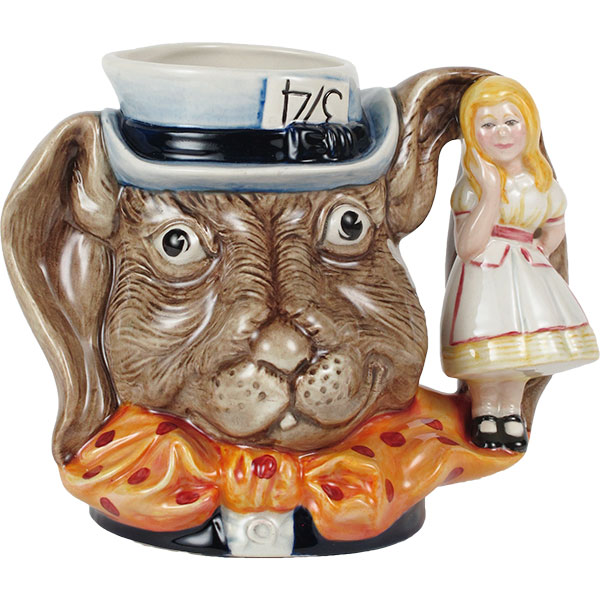
Royal Doulton March Hare Prototype Character Jug
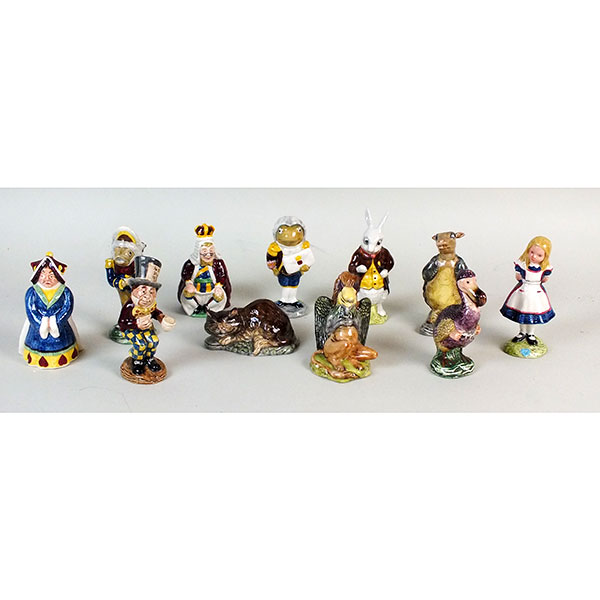
Beswick Alice in Wonderland figures
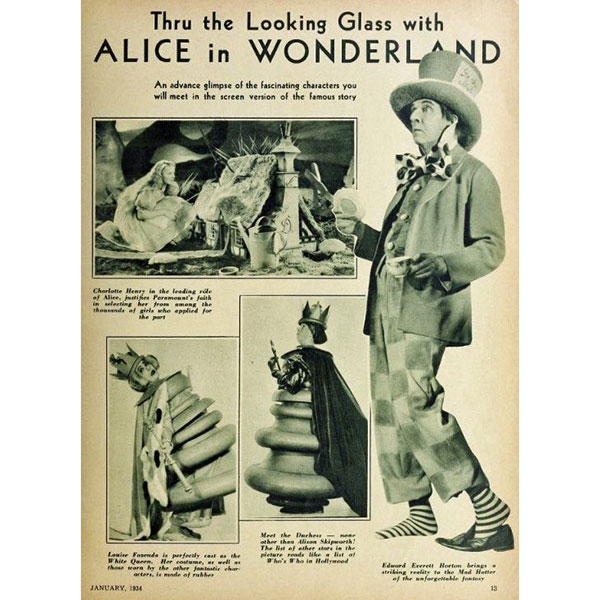
Poster for the 1933 Alice in Wonderland movie
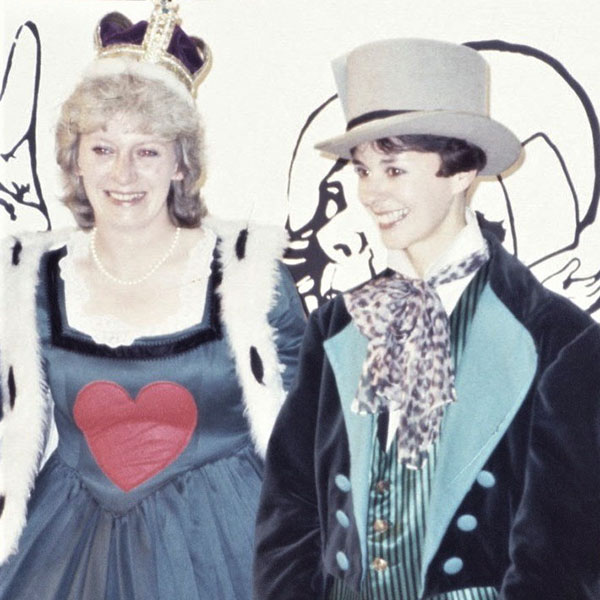
Louise Irvine and Arwen Warmer at the Alice event, London RDICC Gallery
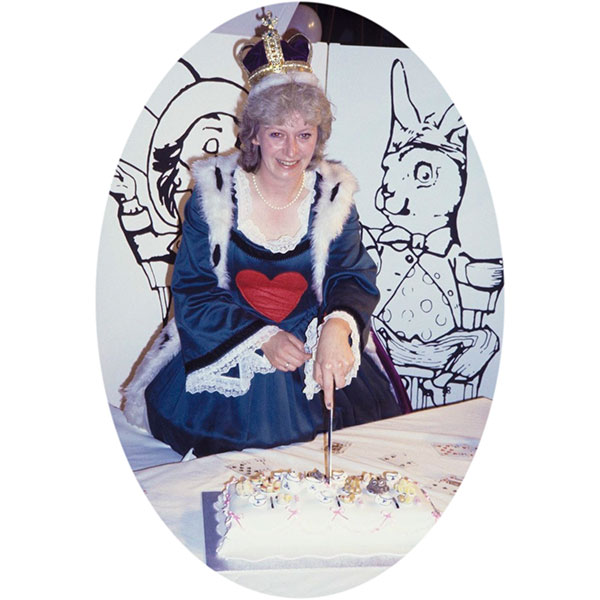
Louise Irvine as the Queen of Hearts at the RDICC Gallery Piccadilly
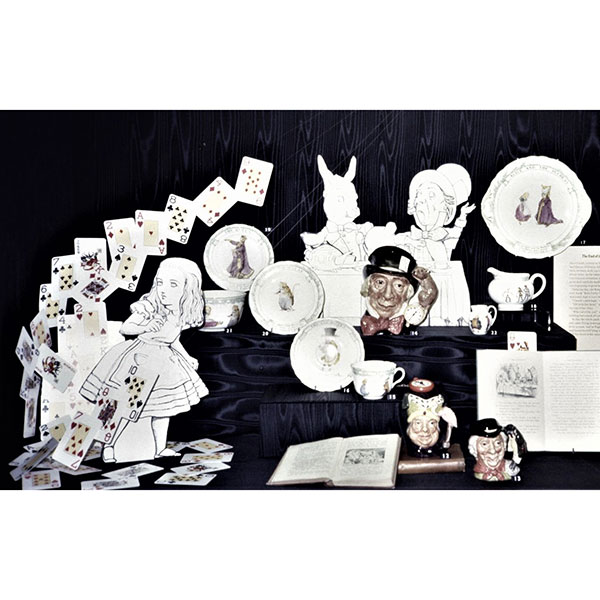
1986 Alice in Wonderland exhibit at the RDICC Gallery
